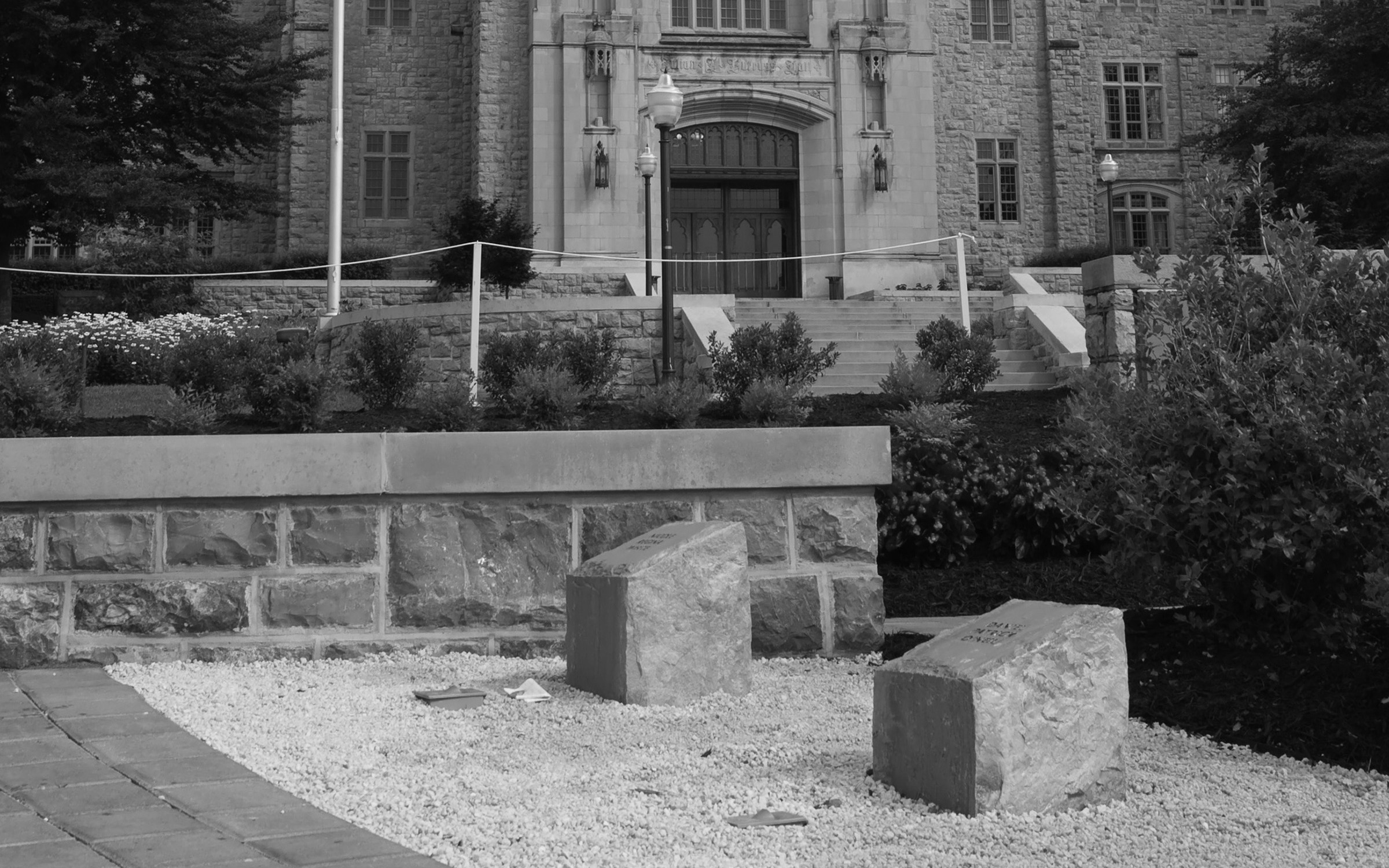Two of the 32 stones placed in front of Burruss Hall on the Virginia Tech Campus to honor the students who lost their lives.
Incident Type
Mass shooting
Location
Virginia Tech
Media Report Details
Deaths: 32, more than a dozen wounded
Estimated Costs of Damage: $48.2 million
What happened at the Virginia Tech Shooting?
On April 16, 2007, Seung-Hui Cho, a student, fired gunshots, killing 27 fellow Virginia Polytechnic Institute and State University students and 5 faculty members in Blacksburg, Virginia, in a student residence hall, a stairway, and in multiple classrooms. The gunman then shot himself, dying by suicide. The Virginia Tech massacre was one of the most striking and visible school shootings to occur since the Columbine tragedy, as it held the single largest fatality count for gun violence within a school or college campus in U.S. history at the time.
Who did R3 support?
Critical incidents such as school shootings go beyond workplace trauma and employee mental health — impacting the students and community as well. R3 provided immediate, in-person behavioral health support and crisis counseling to the students, staff, and families of the Virginia Tech campus community who were impacted by the tragedy.
R3 also supported campus leadership and administration in navigating the logistical and operational crisis management challenges of providing mass disruption response following a high-profile active shooter amidst mass media presence.
Why was behavioral health important after the Virginia Tech Tragedy?
Due to R3’s ability to provide mass disruption response at speed and scale, R3 consultants were immediately flown to Virginia following the shooting. Virginia Tech executive leaders needed leadership support tailored for disruptive events in order to create and enact an effective plan of response, along with coordinating various moving parts.
Jeff Gorter and Sarah Thompson, who led R3’s response efforts on campus, marshaled an emergency management behavioral health support team of 30 people to work closely with the university, ensuring they had resources in place to properly support the Virginia Tech students, staff, and families impacted by the tragedy. Working with the Red Cross, local mental health professionals, and FEMA, the team created drop-in counseling centers for students and helped orchestrate a mass response to meet the behavioral health needs of the larger higher education community.
To navigate the enormous media response and outside attention that threatened to disrupt ongoing support group sessions for students following the events of April, there were times that R3 responders had to function as a “bouncer” for these groups—ensuring that no media personnel was present before the sessions began.
What was the impact of R3’s support?
As a result of R3’s behavioral health support, the students, staff, and families impacted by the Virginia Tech massacre were able to voice and process the heavy emotions, post-traumatic stress and work trauma they felt from coping with the death of a friends, classmates, professors, and loved ones. The support groups and drop-in centers R3 organized on campus allowed them to share their feelings individually and collectively while also drawing on the resilience of their school community. Without this support, many students would have likely not returned to school and may have struggled in silence.
R3’s support also helped Virginia Tech leadership execute an extensive response plan to rebuild organizational resilience with trauma-informed leadership strategies. This step was of paramount importance and was developed under incredibly challenging circumstances and immense pressure.
Don’t wait till after tragedy occurs to navigate how you will support your community. Learn more about how to augment your EAP program with violence prevention and preparedness for disruptions of all sizes with R3’s tailored support solutions.

